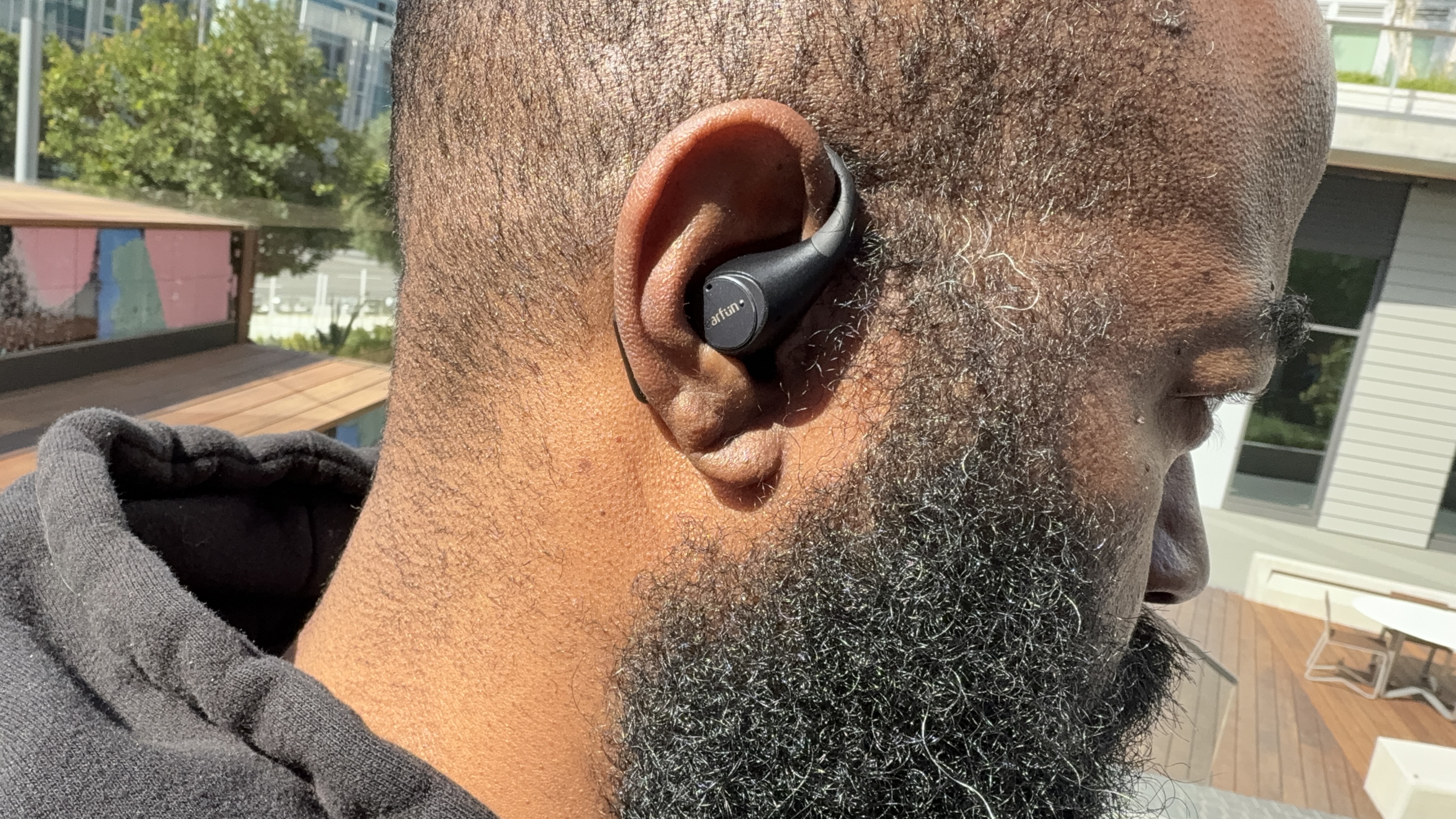Android Central Verdict
As I write this review, the $80 EarFun OpenJump are on sale for $60. At that price, they're a no-brainer for those looking to purchase an open-ear product on a tight budget. Even at $80, with their feature set and sound quality, they're worth serious consideration.
Pros
- +
Price
- +
Comfort
- +
Excellent battery life
- +
HiRes Wireless Audio support
Cons
- -
Touch control ergonomics
- -
Theater Mode not quite theatrical
Why you can trust Android Central
I have colleagues who’ve reviewed EarFun products and speak highly of them. This is my first go with the brand, and as much as I enjoy having a critical ear, and catching something others have missed, that isn't the case here. EarFun has gained a new believer.
Currently on sale on Amazon for $60, the EarFun OpenJump is easy to recommend for those on a budget who also want excellent battery life and an open-ear style for work or play.
Compelling sound and features


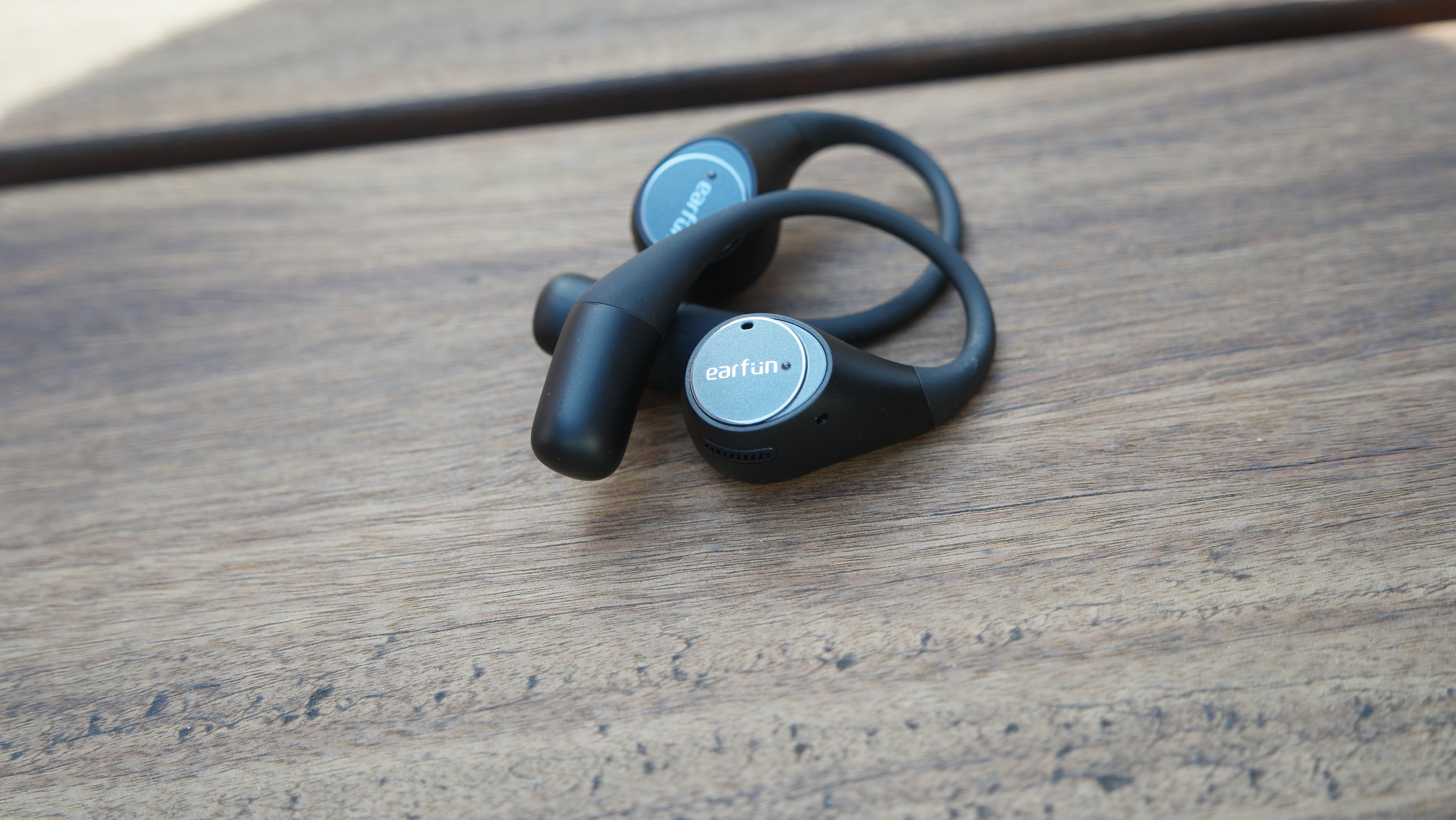
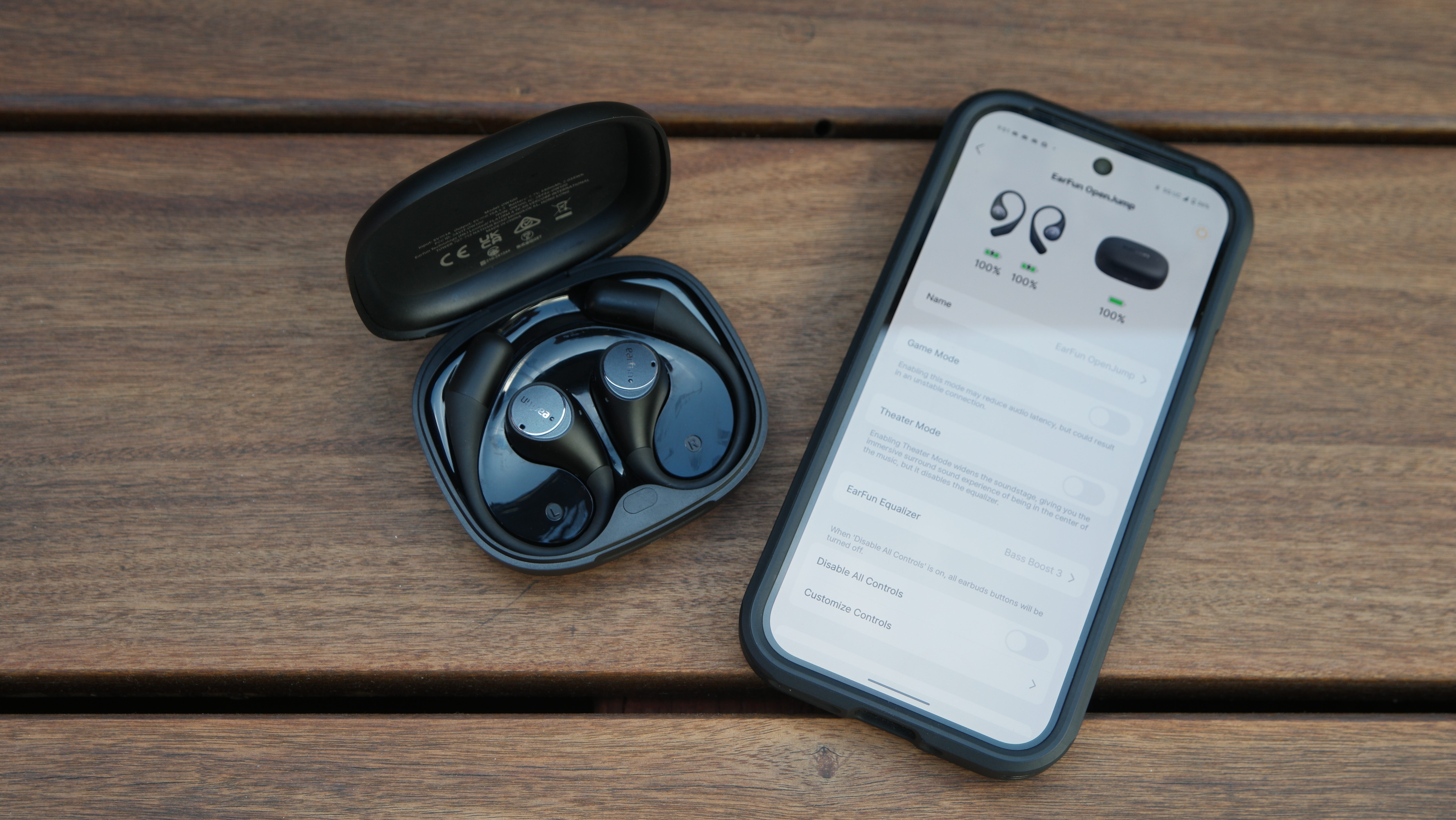

There is a lot to like about the EarFun OpenJump open-ear earbuds! They are one of the least expensive open-ear products and compete with more expensive options, like the excellent Nothing Ear Open.
Let’s talk hardware and features first. Unboxing the EarFun OpenJump, you’ll find the earbuds case with the earbuds inside. Below the tray the case sits in, you’ll find the usual paperwork and a short charge cable. There are no ear tips because this is, after all, an open-ear affair.
Though not as large as some, the case will dominate a pocket despite being very light and not feeling particularly reassuring regarding its build quality. That said, it doesn’t creak, and the hinges don’t have any lateral give, making the “plasticky” feel a bit deceptive.

At this price point, you do get a well-spec’d clamshell case. It comes with USB-C charging and Qi wireless charging support, which is something even more expensive offerings don’t have. There is a pairing button inside the case, and a status LED on the front face of the case, just below the opening. EarFun says you’ll get a total of 42 hours of additional charging out of it.
After examining the case, it was time to set up and pair the EarFun OpenJump. When I first opened the app, I was notified that a firmware update was available. Once that was done, my review began in earnest.
Get the latest news from Android Central, your trusted companion in the world of Android
Listening to the EarFun OpenJump in its default setting is enjoyable, but the experience comes alive when you customize the sound to your hearing, with a caveat. We’ll get to that in a moment.

I’ve worn these all day at my day job, and I have to say that they are quite comfortable! They don’t have the adjustability of the AeroFit 2 that I just reviewed, and they aren’t as large as the Nothing Ear Open, but they are tiny, light, and for my ears, a great fit. Depending on the size and shape of your ears, your mileage may vary, though.
I’ve found them for as cheap as $60, and at that price, they have a lot to offer in the sound quality department. I went back to some of my favorite open-ear TWS earbuds that I’ve reviewed over the last year and performed some A/B testing. They are competitive with open earbuds that cost much more. The Soundcore AeroFit 2, the Nothing Ear Open, and the Bose Ultra Open all fare a bit better when it comes to clarity in the mids and sparkle in the high frequencies.
Given the cost difference, even with the sub-$100 AeroFit 2, that difference is expected. That said, if cost is your primary concern, the sound signature of the OpenJump is nothing to sneeze at.
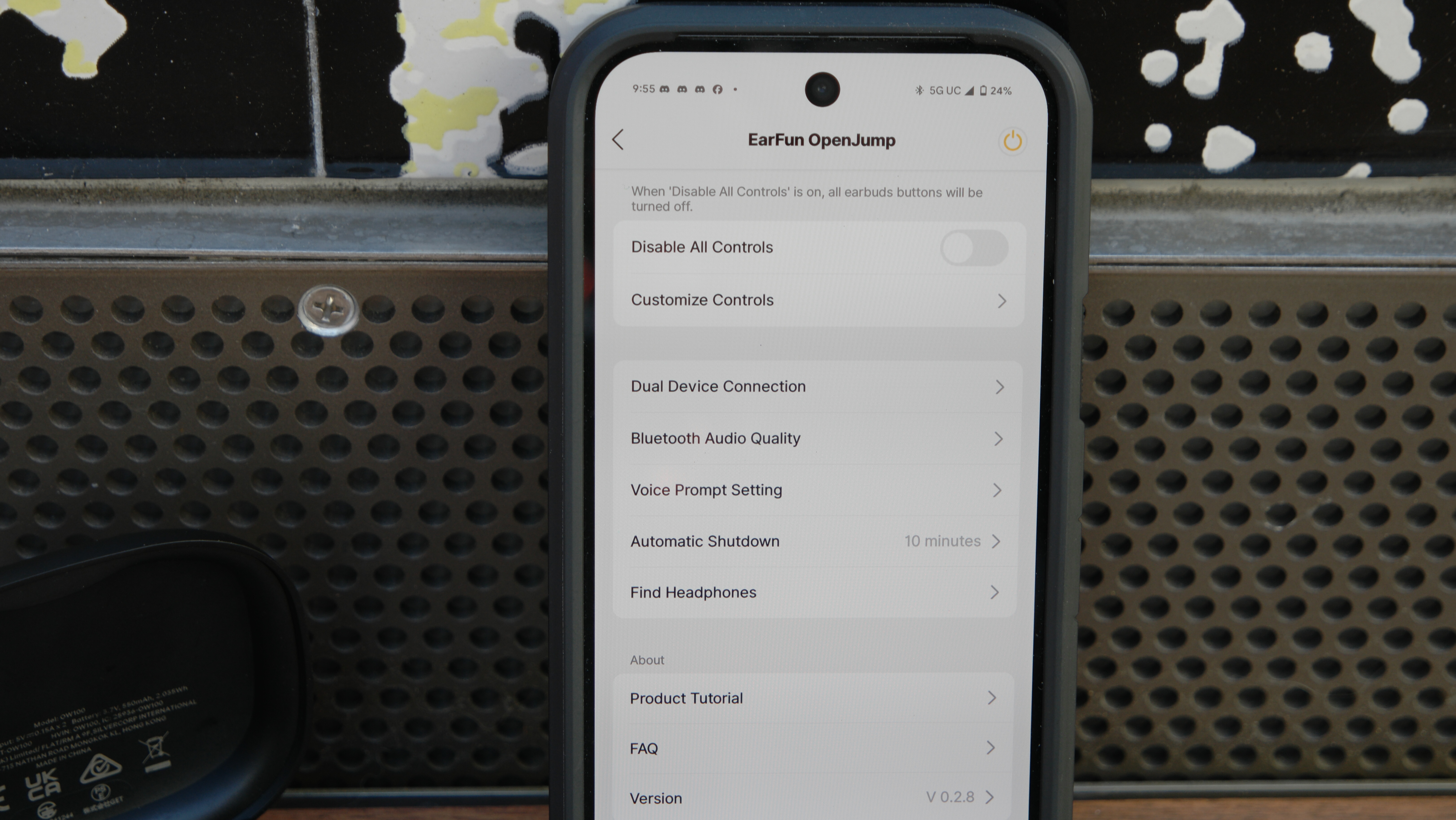
I tested the OpenJump with LDAC activated. Doing so deactivates multipoint functionality, but it's worth it to increase the dynamic range. Having tested quite a few open earbuds, in my opinion, HiRes Wireless Audio support makes a difference in the listening experience.
As with all open-ear earbuds, in the silence of a quiet room, the sound signature is much different than when you’re out on the streets or at a beach. In a quiet room, the EarFun OpenJump sound very good. The highs, lows, and mids are all well represented with my custom EQ profile.
While my custom profile is great in quiet rooms or out on the streets with busy metropolitan life buzzing around me, the Bass Boost 1 preset gave me an enjoyable representation of all the frequencies despite competing audio from passing cars and other urban jungle sounds. Most importantly, playing at the lower volumes that you’ll want to listen to open-ear products, I still had solid sounds pumping into my ears.
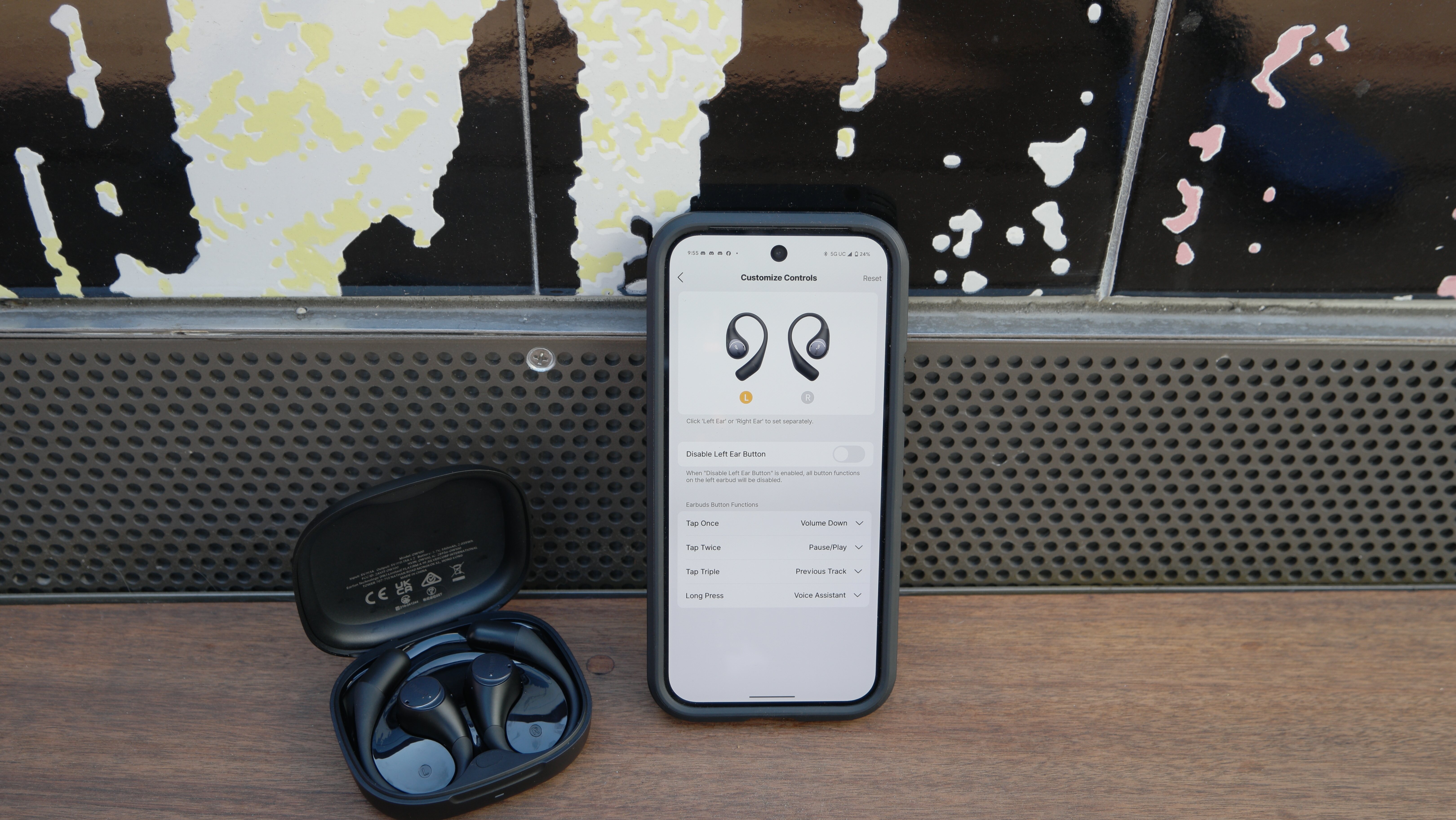
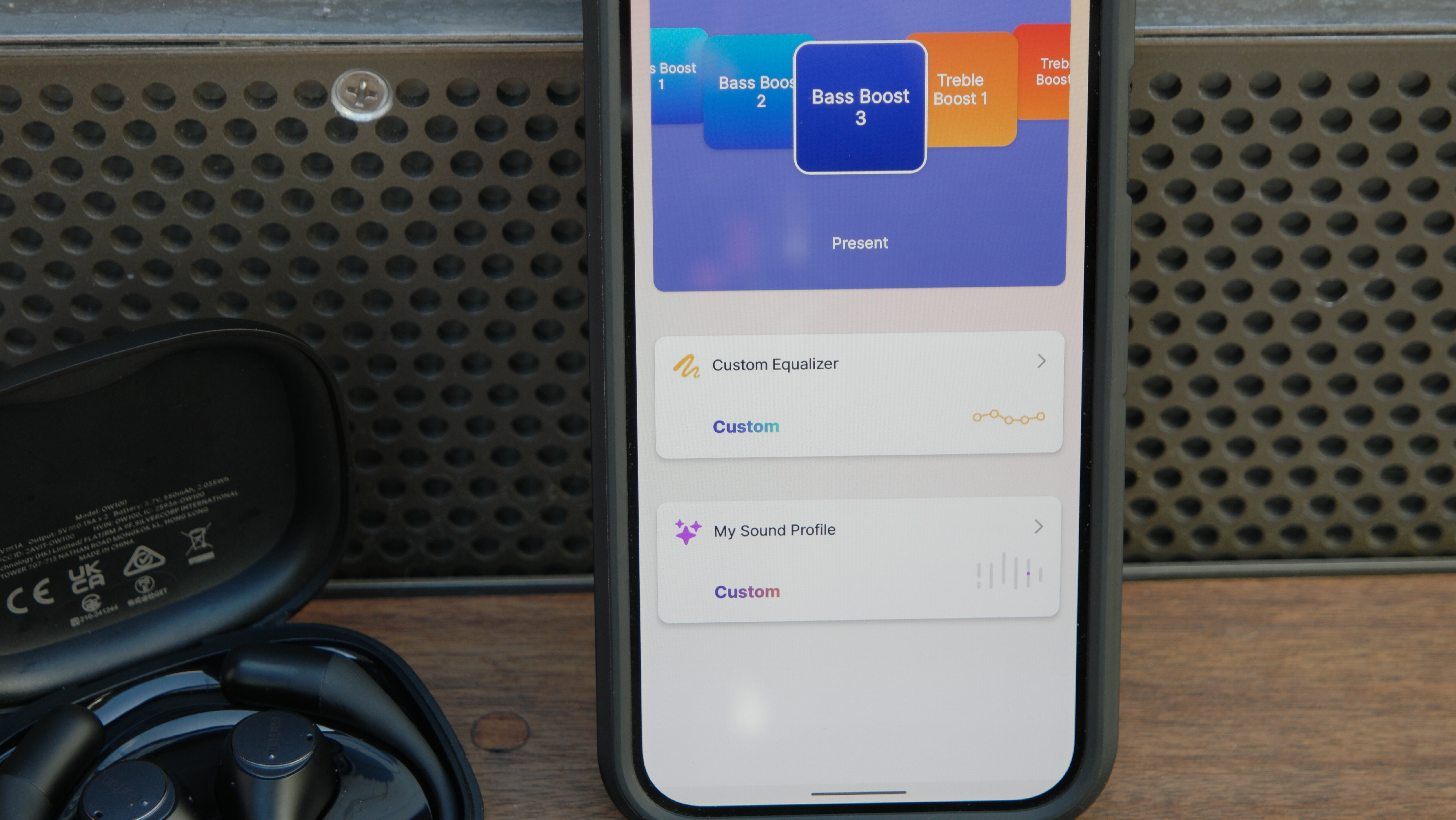
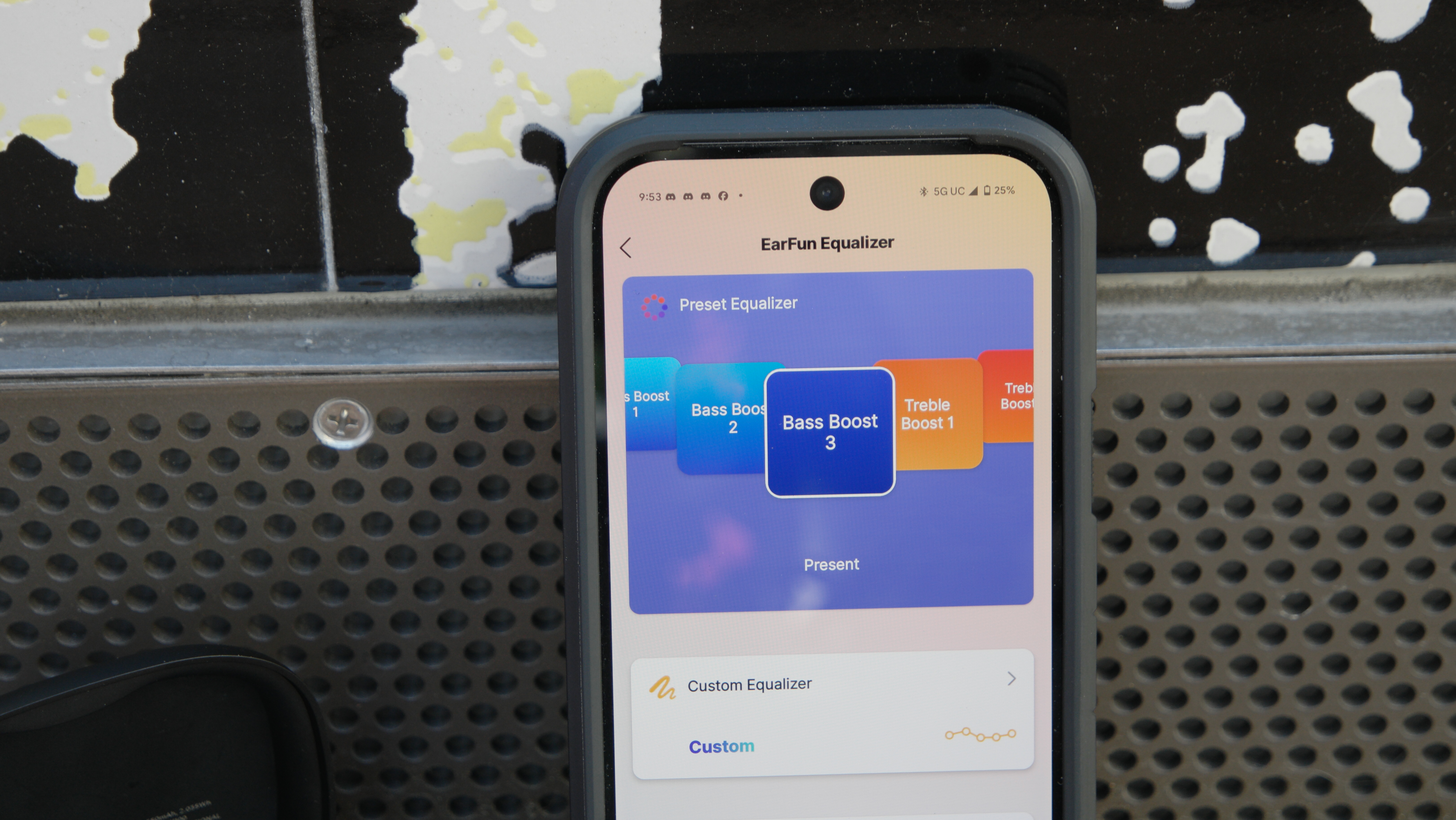
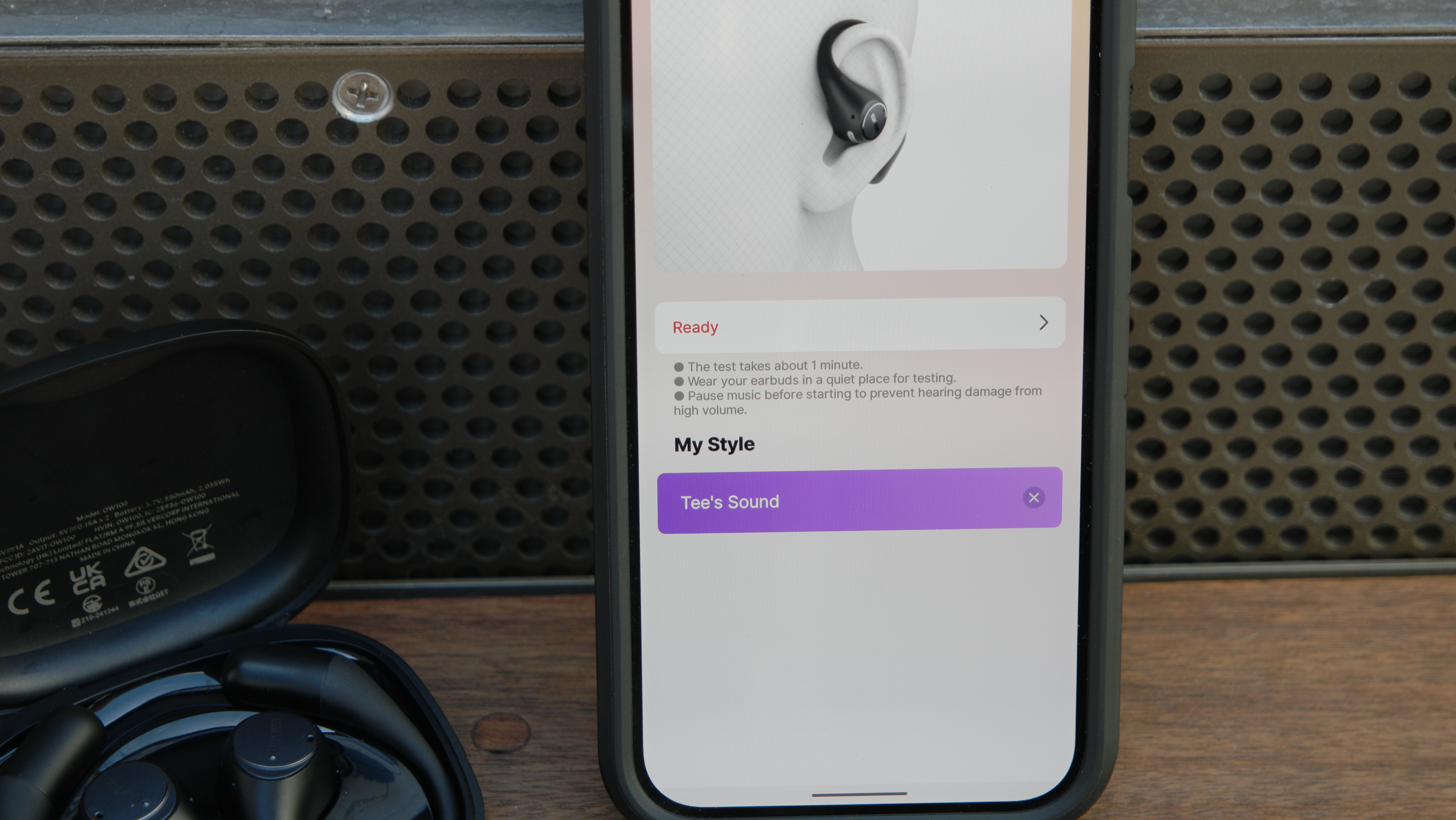
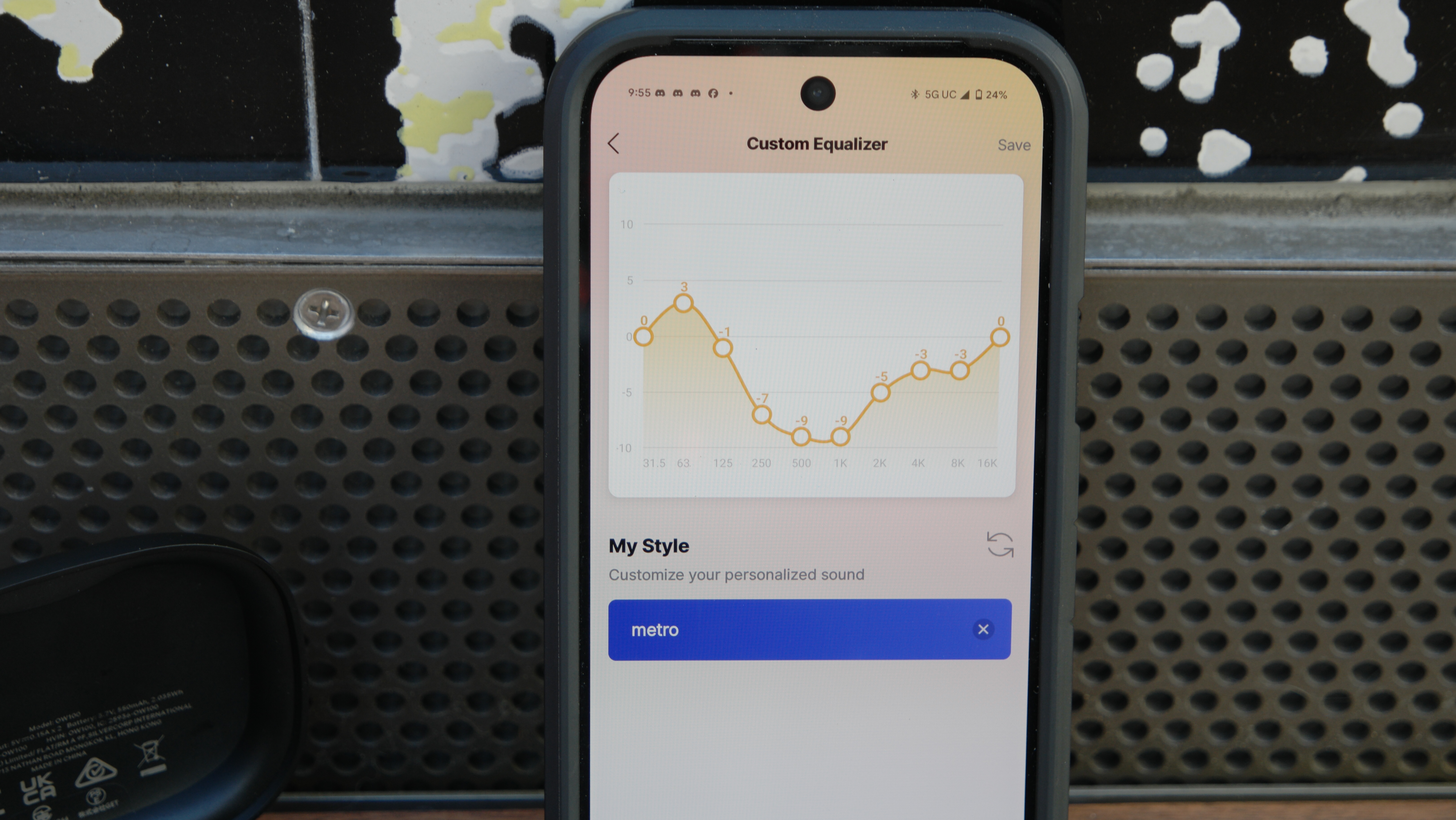
Battery life is excellent with the EarFun OpenJump. Playing a Tidal LoFi stream at about 55% of maximum volume from a Google Pixel 9 with LDAC activated in the app, I saw about 10 hours of battery life. EarFun advertises 11 hours, and those estimates are usually under “ideal conditions,” so having a high-quality codec activated, which drains battery faster, makes that an excellent showing.
Why didn’t I test them at max volume? That isn’t a realistic use case for open-ears. The whole point is to have your volume mixed with ambient sound at a level where the ambient sound is not only audible but also discernible — enabling you to hear cars or people coming up from behind you, for example.
Room for improvement
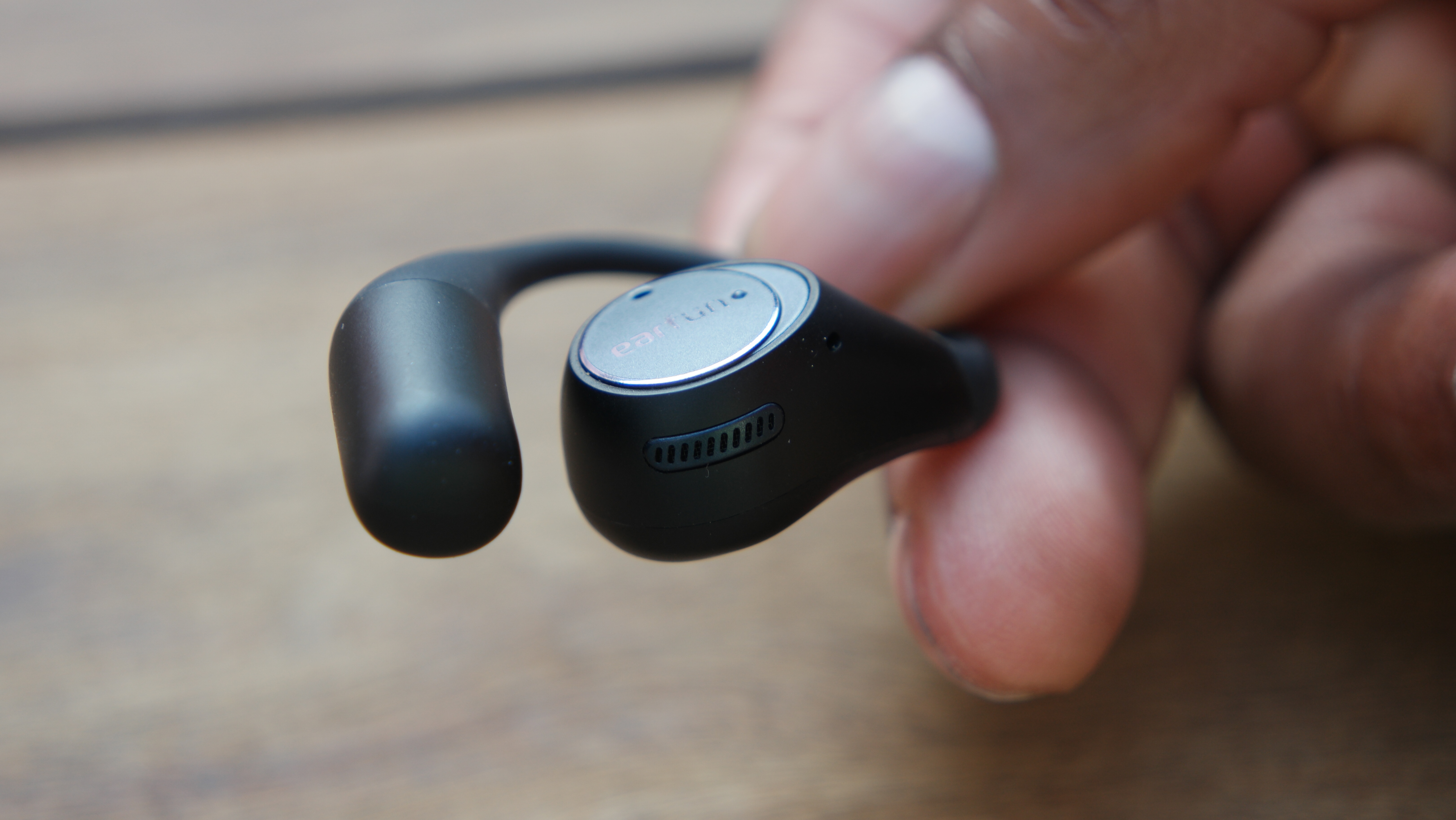
There are some things you should know if you’re seriously looking at the OpenJump. At full price, or on sale, there are some tradeoffs. They aren’t deal breakers, just things you should be aware of.
The Spatial Audio feature, Theater Mode, is not effective in creating a larger soundstage with quality sound. It also overemphasizes mids and highs to the detriment of the music or video content you're listening to. Music sounds better with it deactivated.
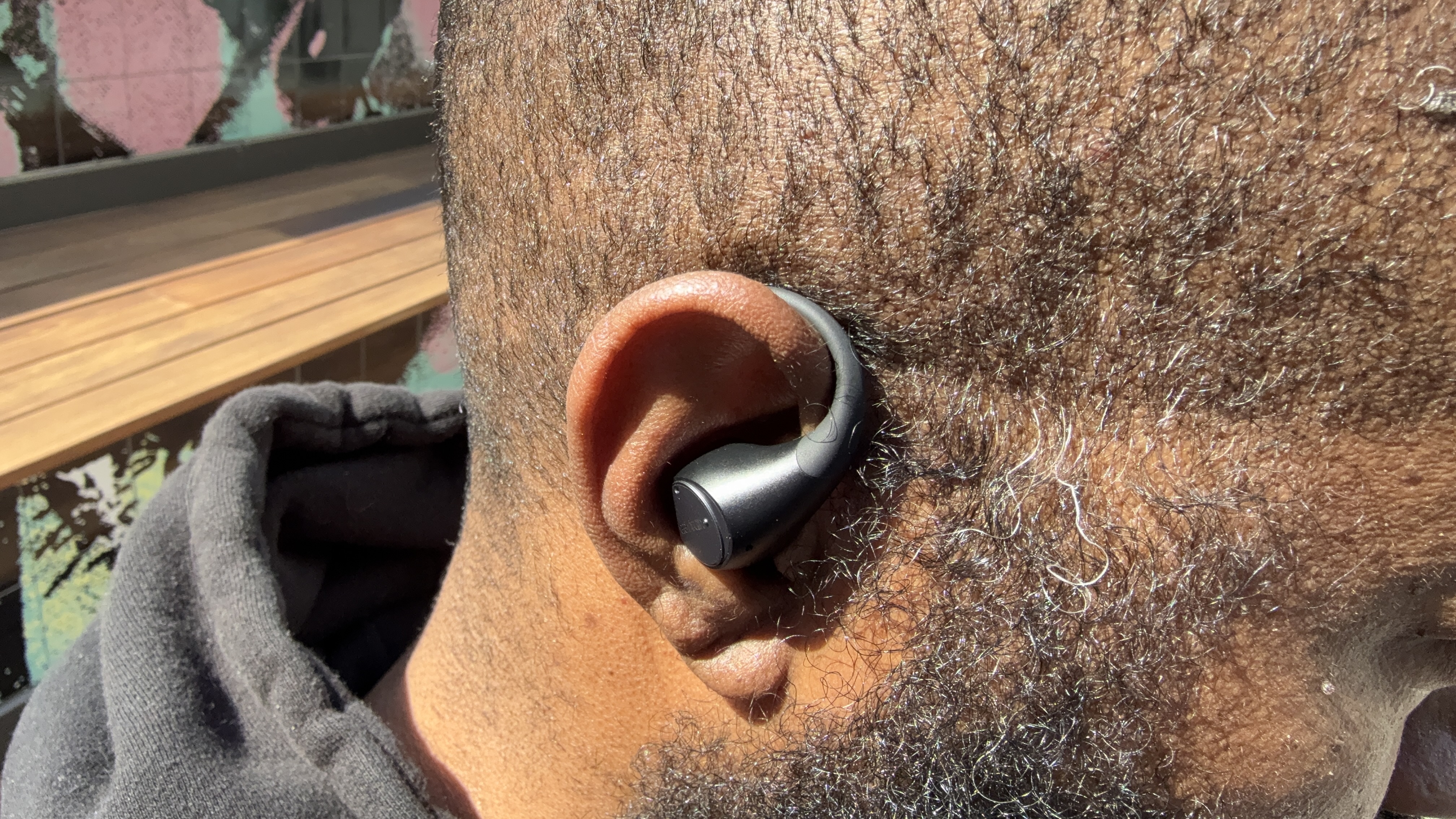
The touch controls could be better implemented. The part of the earbud that sits over your ear and houses the speakers is angled, making it a bit awkward to tap the controls. In the couple of weeks I've had the earbuds, those controls are still problematic for me. Part of that is the diminutive size of the touch surface.
All is not lost, though. You can customize the controls, adding or removing features to make them work for your situation.
What about the competition?

The EarFun OpenJump competes with Soundcore AeroFit 2 (more expensive) and Baseus Eli Sport 1 (cheaper). Outside the US, Honor and Huawei are also competitors. While I haven’t tested some of those, Harish Jonnalagadda's reviews of the Baseus Eli Sport 1 and Honor Earbuds Open are positive.
The most significant difference here is that EarFun has significantly better battery life. Given this, and the OpenJump's good sound quality, it may have the edge over the Eli Sport 1 and Earbuds Open.
The EarFun OpenJump are a steal under $100
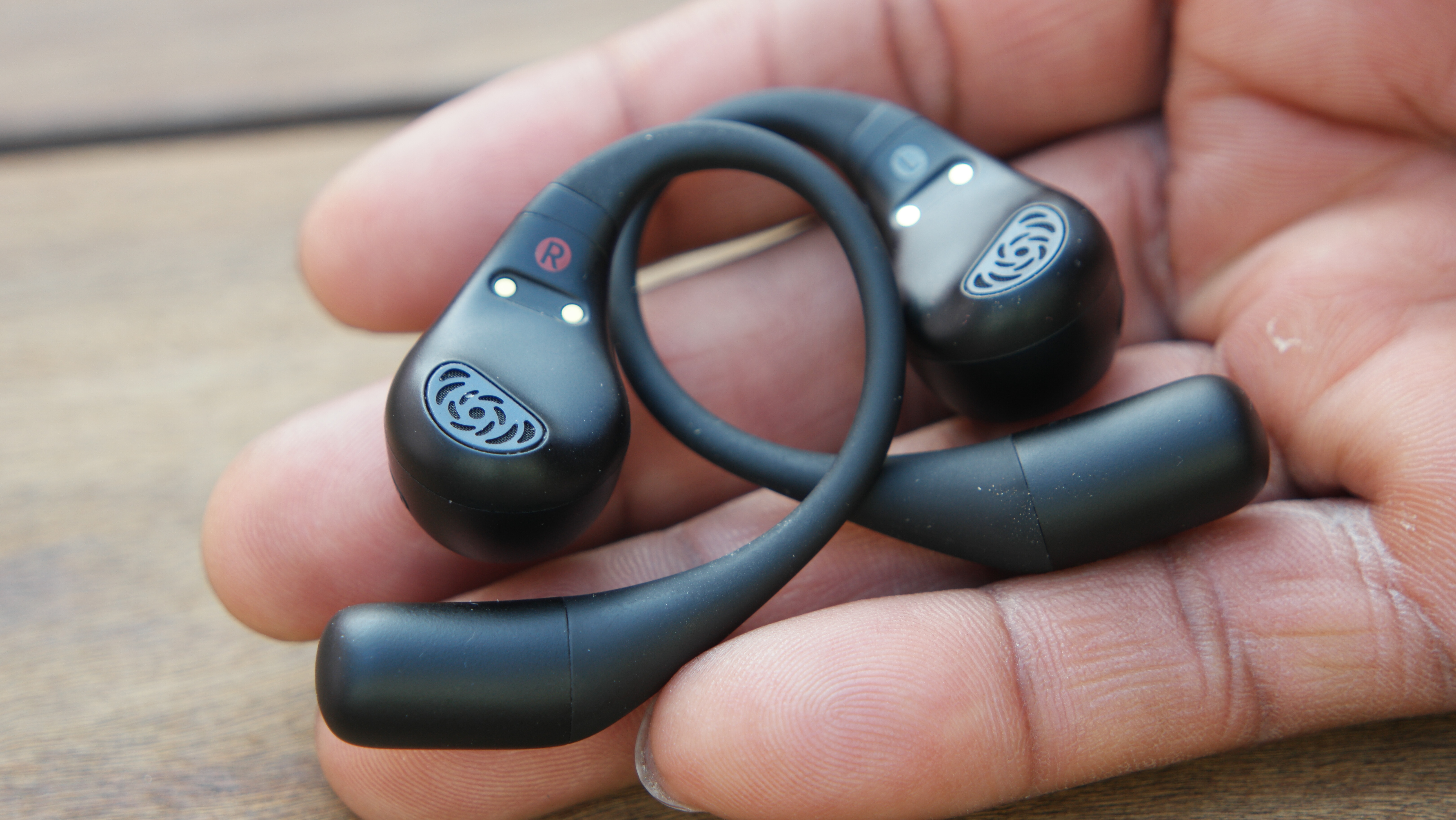
At the sale price of $60, these are the budget open-ear earbuds to beat in the States! At their suggested retail price of $80, they’re still a compelling option compared to earbuds priced at $100 or more.
For their fit, their sound quality, HiRes Wireless Audio support, wireless charging support, and battery life, the EarFun OpenJump are easy to recommend for those looking for open-ear TWS earbuds.

Leap into quality, budget, open-ear sound!
The EarFun OpenJump are a great option for those looking to buy into open-ear audio without breaking the bank. The OpenJump earbuds have excellent battery life, a great app, and sound quality that is competes well against costlier open-ear options.

Tshaka Armstrong is a nerd. Co-Founder of the non-profit digital literacy organization, Digital Shepherds, he’s also been a broadcast technology reporter, writer and producer. In addition to being an award-winning broadcast storyteller, he’s also covered tech online and in print for everything from paintball gear technology, to parenting gadgets, and film industry tech for Rotten Tomatoes. In addition to writing for Android Central, he’s a video contributor for Android Central and posts everything else to his own YouTube channel and socials. He blathers on about his many curiosities on social media everywhere as @tshakaarmstrong.
You must confirm your public display name before commenting
Please logout and then login again, you will then be prompted to enter your display name.
